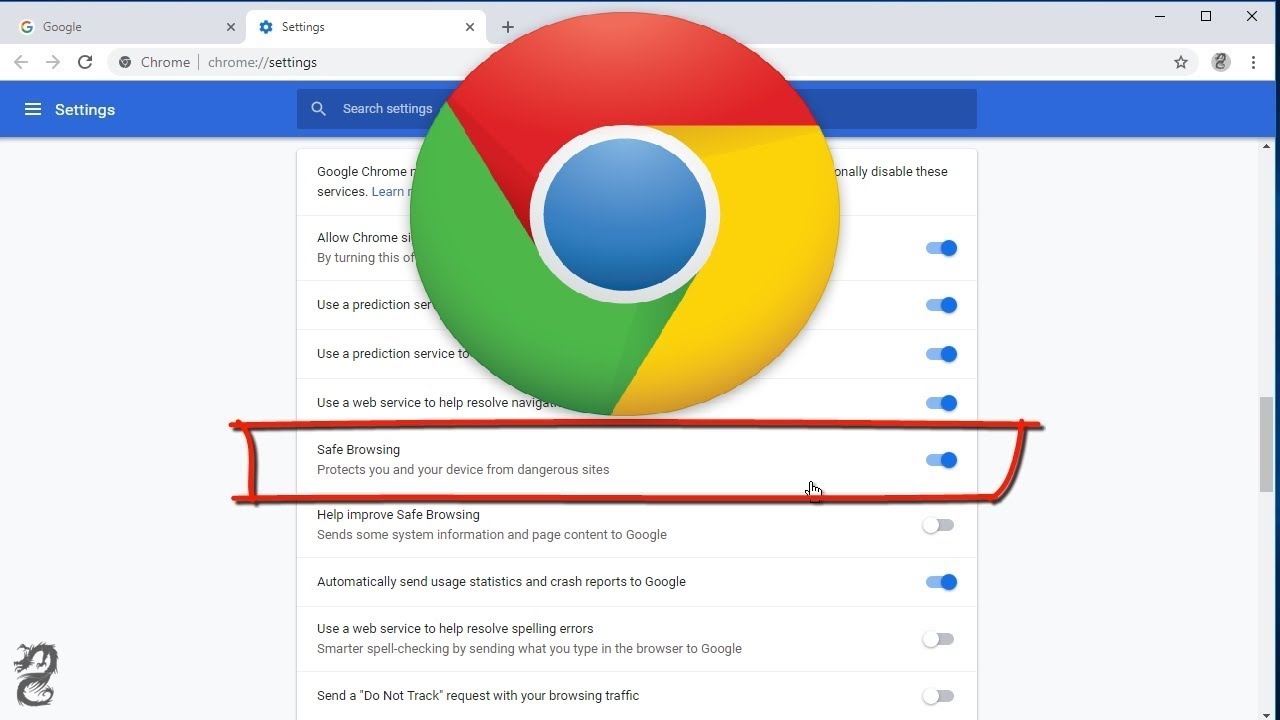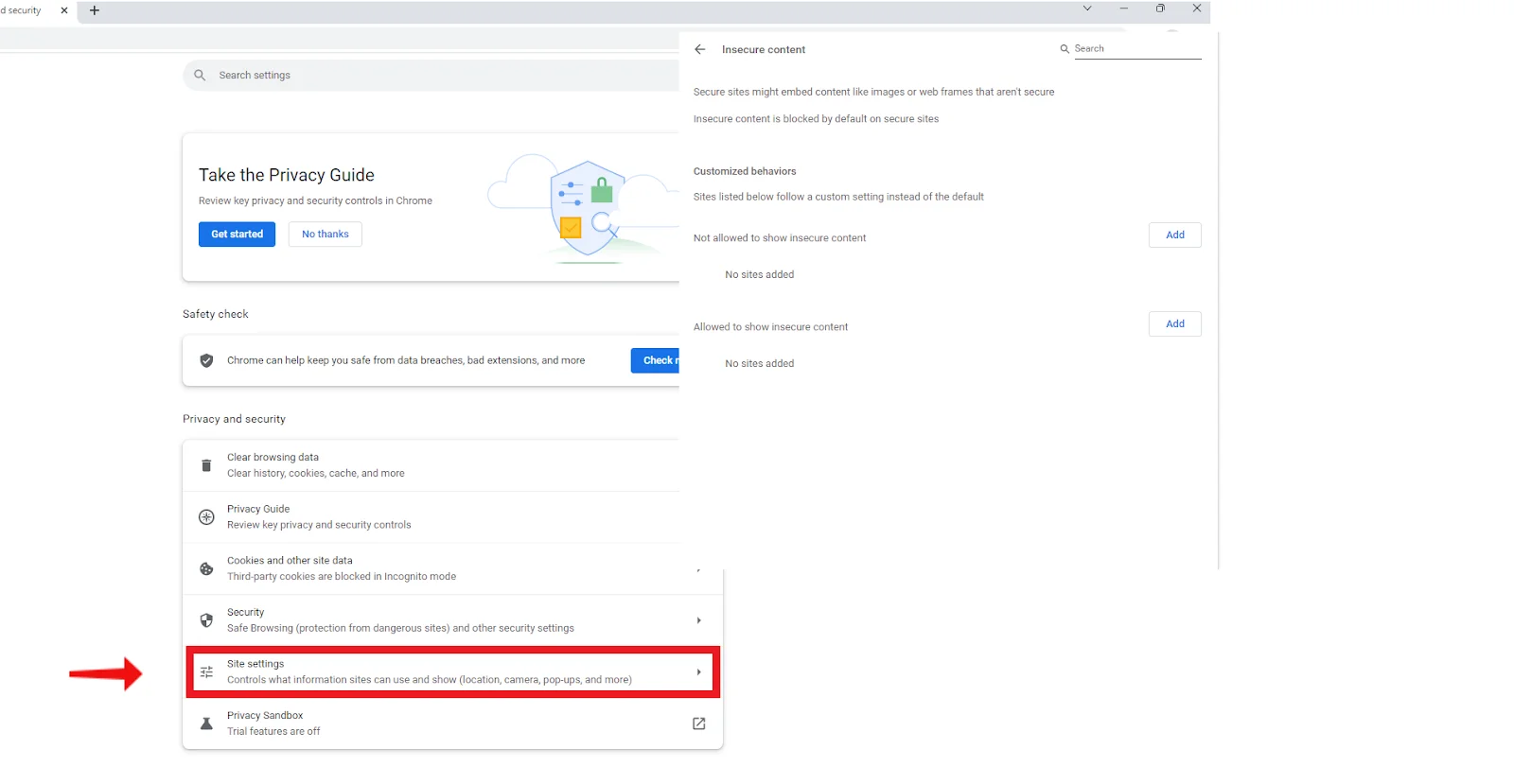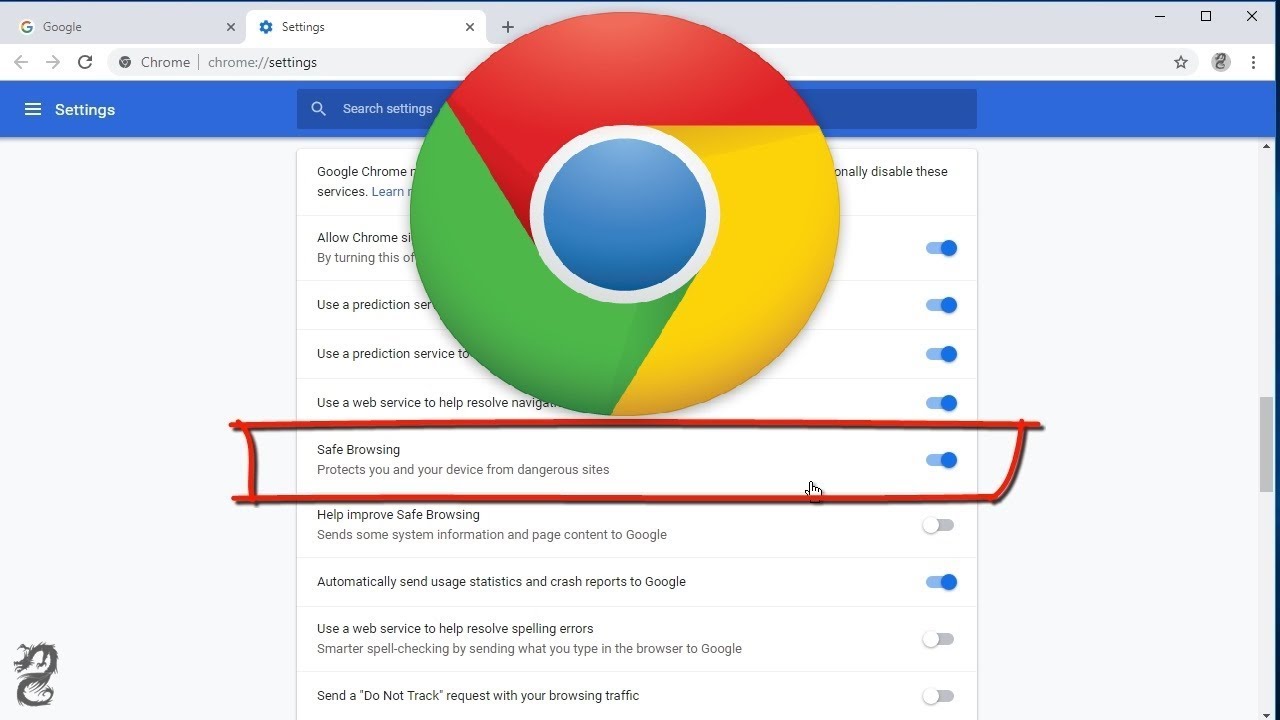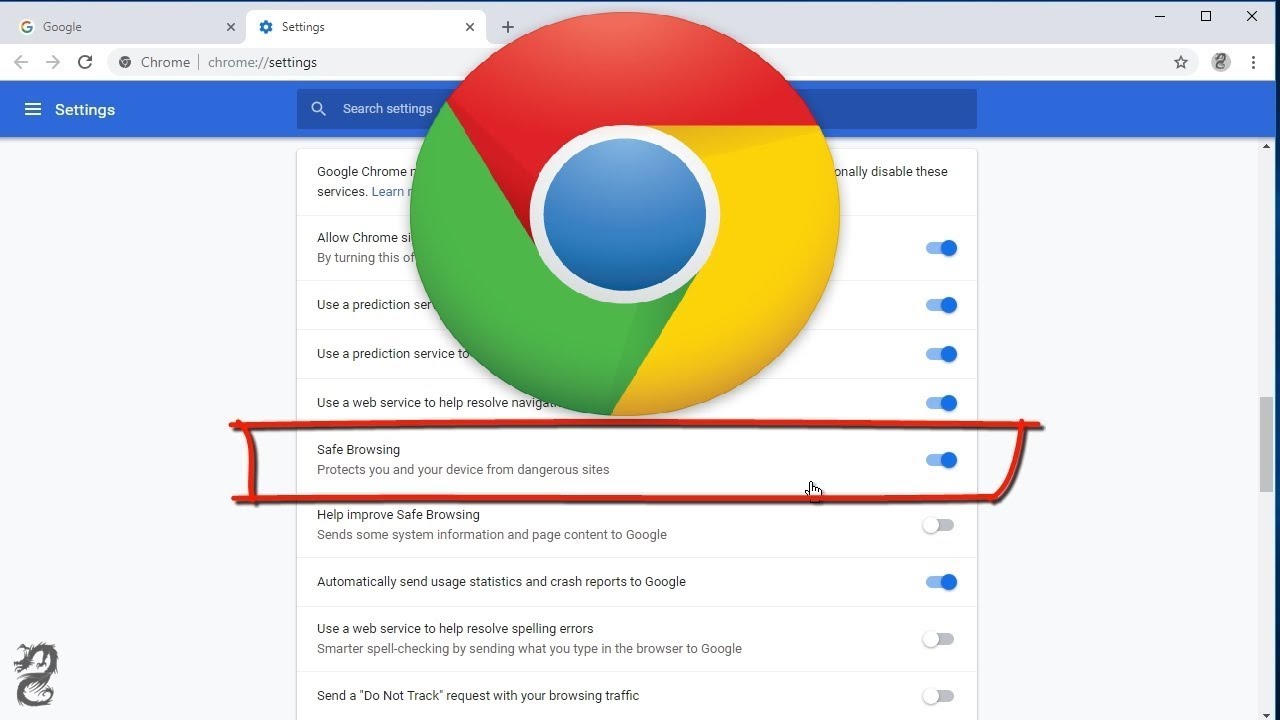Introduction
Starting Chrome in safe mode can be a lifesaver when troubleshooting issues with your browser. Whether you're encountering persistent crashes, unresponsive tabs, or strange behavior, safe mode provides a way to isolate and resolve these problems. This feature allows you to run Chrome with default settings and without extensions, making it easier to identify the root cause of any issues.
When Chrome is launched in safe mode, it operates without loading any extensions or plugins, ensuring a clean and minimal environment. This can be particularly helpful when you suspect that a specific extension or plugin is causing problems. By temporarily disabling these add-ons, you can determine whether they are indeed the culprits behind the browser's erratic behavior.
In this article, we'll delve into the intricacies of Chrome's safe mode, exploring its significance and the step-by-step process of initiating it. Whether you're a casual user or a tech-savvy individual, understanding how to start Chrome in safe mode can empower you to troubleshoot and resolve various browser-related issues effectively. So, let's embark on this journey to uncover the power of Chrome's safe mode and how it can be a game-changer in maintaining a seamless browsing experience.
What is Safe Mode in Chrome?
Safe mode in Chrome is a diagnostic tool designed to help users troubleshoot and resolve issues with the browser. When Chrome is launched in safe mode, it operates with default settings, disabling all extensions and plugins. This stripped-down environment allows users to identify and address problems that may be caused by third-party add-ons or custom settings.
By running Chrome in safe mode, users can isolate issues related to extensions, plugins, or custom settings that might be impacting the browser's performance. This can be particularly useful when encountering frequent crashes, unresponsive tabs, or unexpected behavior within the browser. Safe mode provides a clean slate for Chrome, allowing users to determine whether the issues they are experiencing are related to the browser itself or to external factors.
One of the key benefits of safe mode is its ability to help users pinpoint the root cause of browser issues. By temporarily disabling extensions and plugins, users can assess whether these elements are contributing to the problems they are encountering. This process of elimination can be instrumental in identifying and resolving issues that may otherwise persist.
Furthermore, safe mode serves as a valuable tool for troubleshooting compatibility issues. If certain extensions or plugins are causing conflicts with Chrome, running the browser in safe mode can help identify and address these conflicts. This can ultimately lead to a more stable and reliable browsing experience.
In essence, safe mode in Chrome provides a controlled environment for diagnosing and addressing browser-related issues. It empowers users to troubleshoot with precision, enabling them to identify and resolve issues stemming from extensions, plugins, or custom settings. Understanding the functionality and significance of safe mode can be instrumental in maintaining a smooth and trouble-free browsing experience.
Why Start Chrome in Safe Mode?
Starting Chrome in safe mode offers a myriad of benefits for users encountering browser-related issues. Here's why initiating safe mode in Chrome can be a game-changer:
-
Isolating Extension-Related Issues: Safe mode allows users to run Chrome without loading any extensions. This is particularly useful when troubleshooting issues stemming from specific extensions. By disabling all extensions in safe mode, users can determine whether any of these add-ons are causing crashes, slowdowns, or other irregular behavior within the browser.
-
Identifying Plugin-Related Problems: Plugins can sometimes interfere with Chrome's normal operation, leading to performance issues or unexpected behavior. Safe mode provides a way to run Chrome without loading any plugins, enabling users to identify and address problems caused by these elements. This can be crucial in resolving issues related to multimedia content, security plugins, or other browser plugins.
-
Troubleshooting Unresponsive Tabs and Crashes: When Chrome becomes unresponsive or crashes frequently, it can be challenging to pinpoint the underlying cause. Safe mode offers a clean environment for running the browser, making it easier to identify and address issues that may be contributing to these problems. By temporarily disabling extensions and plugins, users can narrow down the potential causes of unresponsive tabs and crashes.
-
Diagnosing Custom Settings Impact: Custom settings and configurations within Chrome can sometimes lead to unexpected behavior or performance issues. Safe mode allows users to run the browser with default settings, bypassing any custom configurations. This can help in determining whether specific settings or configurations are contributing to the problems being experienced.
-
Resolving Compatibility Conflicts: Safe mode is instrumental in diagnosing compatibility conflicts between Chrome and third-party extensions or plugins. By running the browser without loading any external add-ons, users can identify and address conflicts that may be impacting the browser's stability and performance.
In essence, starting Chrome in safe mode provides a controlled environment for diagnosing and resolving a wide range of browser-related issues. Whether it's troubleshooting extension conflicts, identifying plugin-related problems, addressing unresponsive tabs, or diagnosing custom settings impact, safe mode empowers users to isolate and resolve issues with precision. This makes it an invaluable tool for maintaining a smooth and trouble-free browsing experience.
How to Start Chrome in Safe Mode
Starting Chrome in safe mode is a straightforward process that can be initiated using a simple command line parameter. Here's a step-by-step guide to launching Chrome in safe mode:
-
Close All Chrome Windows: Before initiating safe mode, ensure that all Chrome windows are closed. This includes any active tabs and background processes associated with the browser.
-
Access the Run Dialog: Press the
Windows key + Ron your keyboard to open the Run dialog. Alternatively, you can search for "Run" in the Windows search bar and open the Run application. -
Enter the Command: In the Run dialog, type the following command:
chrome --safe-mode. This command instructs Chrome to launch in safe mode, bypassing the loading of extensions and plugins. -
Press Enter: After entering the command, press the
Enterkey to execute it. This will initiate Chrome in safe mode, providing a clean and minimal environment for troubleshooting browser-related issues. -
Verify Safe Mode: Once Chrome launches, you can verify that it is running in safe mode by checking for the absence of any loaded extensions or plugins. Additionally, you may notice a notification or indicator confirming that safe mode is active.
-
Troubleshoot and Resolve Issues: With Chrome running in safe mode, you can now troubleshoot and address any problems you may have been experiencing. Test the browser's performance, responsiveness, and stability to determine whether the issues persist in this controlled environment.
-
Exit Safe Mode: To exit safe mode and return Chrome to its regular operation, simply close the browser and relaunch it without the
--safe-modecommand line parameter.
By following these steps, you can effectively start Chrome in safe mode, providing a conducive environment for diagnosing and resolving various browser-related issues. Whether you're troubleshooting extension conflicts, identifying plugin-related problems, or addressing unresponsive tabs, safe mode equips you with the tools to isolate and resolve these issues with precision.
Conclusion
In conclusion, understanding how to start Chrome in safe mode can be a game-changer when it comes to troubleshooting and resolving browser-related issues. By delving into the intricacies of safe mode and its significance, users can empower themselves to maintain a seamless and trouble-free browsing experience.
Safe mode in Chrome serves as a powerful diagnostic tool, allowing users to run the browser with default settings and without loading any extensions or plugins. This controlled environment provides a clean slate for identifying and addressing issues that may be caused by third-party add-ons or custom settings. Whether it's isolating extension-related issues, identifying plugin-related problems, troubleshooting unresponsive tabs and crashes, diagnosing custom settings impact, or resolving compatibility conflicts, safe mode equips users with the means to pinpoint the root cause of browser issues with precision.
The step-by-step process of starting Chrome in safe mode is straightforward, requiring a simple command line parameter. By following the outlined steps, users can initiate safe mode and leverage its clean and minimal environment to troubleshoot and address various browser-related issues effectively. Once in safe mode, users can test the browser's performance, responsiveness, and stability, allowing them to determine whether the issues persist in this controlled environment.
Ultimately, the ability to start Chrome in safe mode empowers users to take control of their browsing experience. It provides a systematic approach to diagnosing and resolving issues, ensuring that the browser operates smoothly and reliably. By leveraging safe mode, users can navigate through troubleshooting processes with confidence, knowing that they have the tools to isolate and address a wide range of browser-related issues.
In essence, safe mode in Chrome is not just a feature; it's a valuable ally in the quest for a seamless browsing experience. By understanding its functionality and significance, users can harness the power of safe mode to maintain a browser that operates at its optimal best. So, the next time you encounter browser-related issues, remember the prowess of safe mode and how it can be instrumental in troubleshooting and resolving those pesky problems.

























